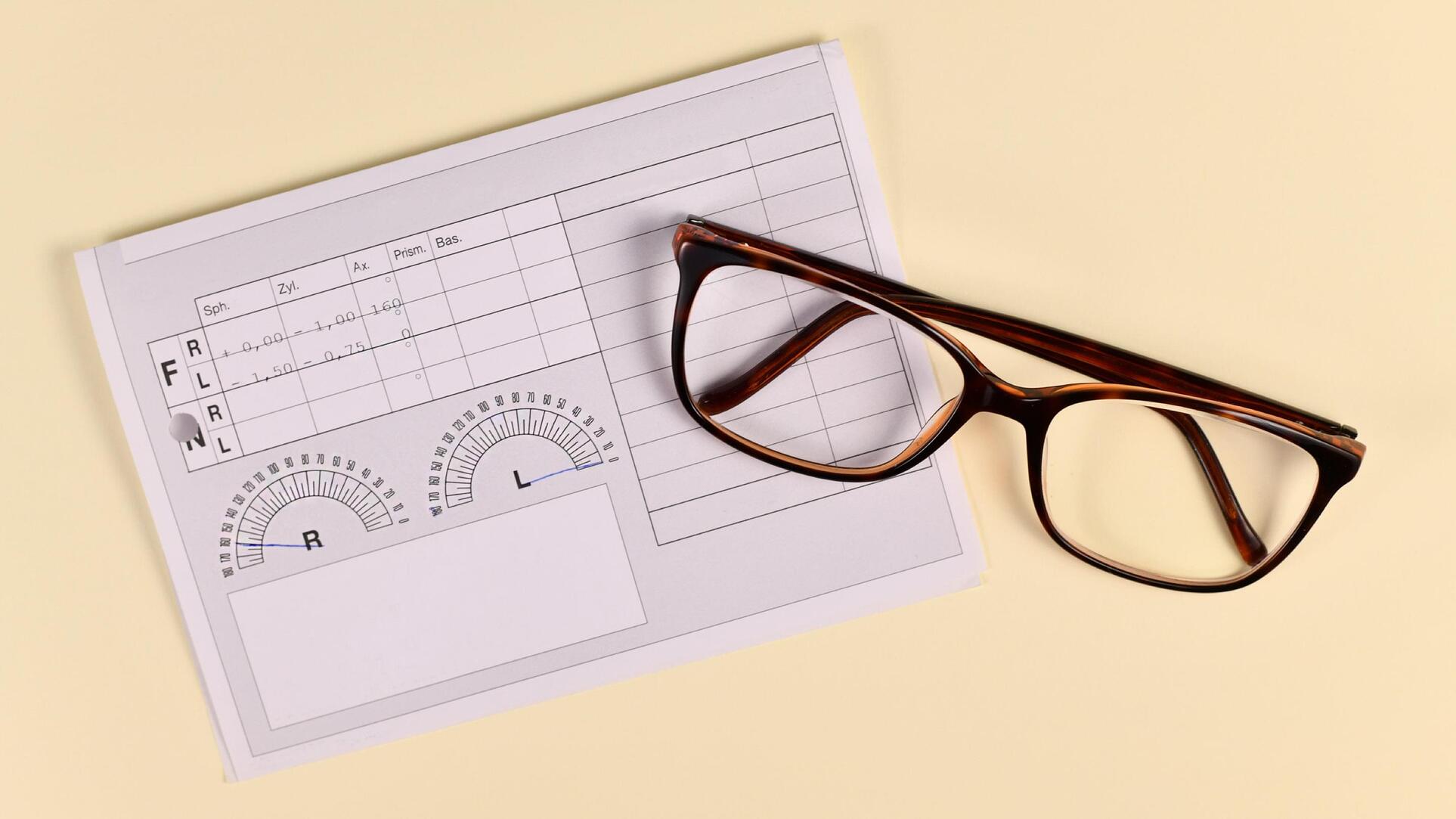
How To Read Your Eye Prescription
For many of us, reading an eye prescription can seem a bit complicated. What do all these abbreviations and numbers mean? Well, the answers are actually simpler than you might expect!
Whether this is your first pair of prescription glasses or you’ve been wearing them for years, it’s never too late to learn how to read your eye prescription.
What do the numbers on an eye prescription mean?
When looking at your prescription, you might see the letters OS and OD.
- OS (oculus sinister) refers to your left eye.
- OD (oculus dextrus) refers to your right eye.
Why not just call it left and right? Latin is still commonly used in the medical world, so these old phrases have stuck around.
OS and OD numbers tell an eyewear professional how strong your prescription should be in each eye. The measurements are in diopters, which is the amount of focus power your lenses need to help you see clearly. A higher number means a stronger prescription.
When looking at your OS and OD, you’ll also notice plus and minus signs next to each number.
- Plus (+) indicates farsightedness. This means things closer to you are harder to see. For example, you may have no problem driving without glasses but still need them when reading.
- Minus (-) indicates nearsightedness. This means things further away are harder to see. You may need glasses for driving but not for reading things up close.
In general, the (+/-) signs of the SPH (or CYL) of the left and right eyes are the same, but very occasionally there are cases that the left and right eye signs are different.
What if there are three numbers on my prescription?
If you have three numbers on your prescription, it means that you have astigmatism. On a normal eye, the cornea is round. For those with astigmatism, the cornea is slightly misshapen.
Astigmatism is a common condition, so don’t be alarmed if your doctor tells you that you have it. Your glasses just need a little extra oomph to help correct it.
There are also some other letters involved in an astigmatism prescription.
- S or SPH stands for “sphere” and is the diopter measurement of your prescription. This is the same as a normal prescription. The number will have either a plus sign or a minus sign to indicate farsightedness or nearsightedness.
- C or CYL stands for “cylinder” and is the diopter measurement of your astigmatism. Some people have mild astigmatism while others have more severe cases. Similar to OS and OD, higher numbers indicate a stronger prescription.
- The last number is the “axis” and represents the degree of your astigmatism. Everyone who has astigmatism has a differently shaped cornea. This number indicates how the cornea is shaped on your eye, represented as an integer between 0 and 180. If there is a CYL value on your prescription, there will always be an axis value.
What does the “ADD” value on my prescription mean?
If you notice an ADD value on your prescription, this means some additional magnification has been recommended to help correct presbyopia, a natural part of aging that affects nearly everyone over 40.
ADD values are always measured in steps of +0.25, applying to both eyes.
Generally, when there are ADD values on your prescription, you may need progressive glasses to help with both reading and distance. Note that you’ll be required to confirm the purpose of your lenses if you have ADD values when ordering glasses from our site.
Of course, plenty of people use reading glasses to correct presbyopia, and not all require a prescription. Be on the lookout for signs you might need reading glasses and talk to your doctor to figure out the best solution for you.
What does “PD” stand for?
The last letters you will see on your prescription are “PD”, which stands for “pupillary distance”. PD is the amount of space between your pupils and determines how a pair of glasses will fit your face.
Luckily, you can measure PD yourself if needed using an online PD measurement tool. (It only takes a couple of minutes.)
If you’re looking for a less convenient means of measuring PD, you can also use a millimeter ruler.
- Find a millimeter ruler and a mirror.
- Sit or stand in front of the mirror, looking straight into it.
- Place the ruler in front of your nose.
- Measure the distance between the centers of your pupils.
- Jot down the measurement in millimeters.
Now you’ve got your PD! It never hurts to measure more than once for the sake of accuracy, but that’s all there is to it.
What else should I know about my eye prescription?
If you’re shopping online for prescription glasses, you’ll need all of these numbers to make sure that your new glasses work for you. You can also use FSA/HSA spending for prescription eyewear, so you can save the most money when you order.
Remember: Eye prescriptions have an expiration date. They typically last one or two years, but you’ll need to check the prescription itself to see how long it’s valid. Expiration dates are typically printed directly on the prescription.
How do I use my eye prescription to buy glasses?
Now that you understand your prescription, it’s time to get some new glasses!
At Yesglasses, we have a large selection of frames and lens types to choose from. Usually, your eye doctor will indicate a recommended lens or coating type on your prescription.
When buying glasses, you can either choose lenses according to your doctor’s recommendation or upload your eye prescription directly to us. We can then double-check everything on the prescription to make sure you get exactly what you need.
Browse our collection of prescription eyeglasses and sunglasses. We’re confident you’ll find the perfect pair for you!
